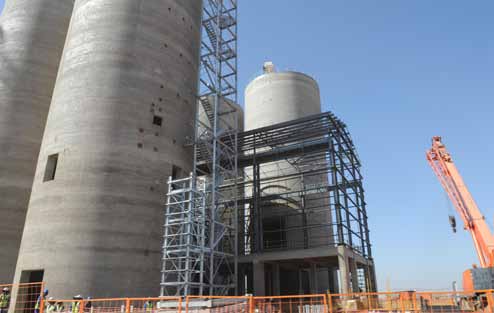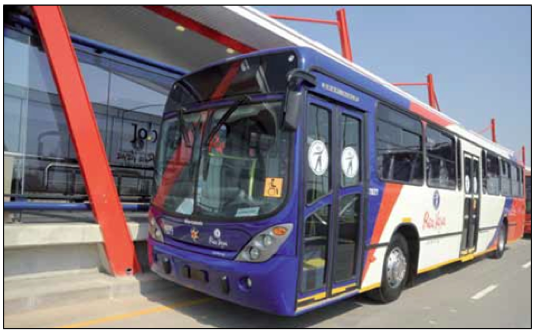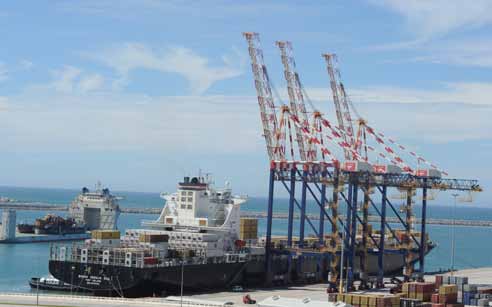Infrastructure
Government is banking on its massive infrastructure development drive to create new jobs, stimulate economic growth, strengthen the delivery of basic services and support the integration of African economies.
In 2012, government announced a number of major infrastructure projects to address the major challenges of poverty, unemployment and inequality facing the country.
“We are going to launch a huge campaign of building the infrastructure nationwide. This will boost the level of economy and create job opportunities,” President Jacob Zuma said at the time.
The Presidential Infrastructure Coordinating Commission (PICC) was also established, bringing together ministers, premiers and mayors from all the metropolitan cities. The PICC is the centralised point at which all infrastructure development is handled.
The PICC developed 18 Strategic Infrastructure Projects (SIPs) as part of the infrastructure development drive, with each SIP comprising specific infrastructure components and programmes. They cover a range of economic and social infrastructure initiatives in all nine provinces, with emphasis on poorer provinces. The SIPs include the building of schools, integrated public transport systems, construction of dams and pipelines, and the upgrading of freeways, ports, rail networks and power stations.
Electricity generation
 In 2007 the country was gripped by huge blackouts, with power outages wreaking havoc across the country. The blackouts were caused by the increasing demand in electricity. Rapid economic growth led to higher demand and there was not enough supply.
In 2007 the country was gripped by huge blackouts, with power outages wreaking havoc across the country. The blackouts were caused by the increasing demand in electricity. Rapid economic growth led to higher demand and there was not enough supply.
To deal with the challenge of load shedding, government sought to accelerate new electricity generation capacity and is building new power stations.
Medupi Power Station in Lephalale, Limpopo, is a new dry-cooled, coal-fired power station built by Eskom. When completed, the power station will have six boilers each powering an 800MW turbine, producing 4 800MW of power. It is expected to become the largest dry-cooled, coal-fired power station in the world.
Kusile Power Station in Mpumalanga is the second coal-fired power station being built as part of government’s infrastructure expansion programme. The completion of the station is scheduled for 2017.
The R121 billion third station, Ingula, is being built on the border of the Free State and KwaZulu-Natal. The pumped-storage scheme project connects two dams by underground waterways and is made up of 10.5km of underground tunnels.
Public transport
 A few years ago, most commuters going to work had to deal with cramped buses, taxis or trains in major metros. In recent years things have improved with the introduction of new, sleek trains and buses as part of government’s infrastructure rollout plan.The Department of Transport is set to spend R2.3 billion on the country’s bus system. Money is also being channelled into the South African National Roads Agency Limited (R430 million), the South African Rail and Commuter Corporation (R1 316 million) and the Cross Border Road Transport Agency (R1 million).
A few years ago, most commuters going to work had to deal with cramped buses, taxis or trains in major metros. In recent years things have improved with the introduction of new, sleek trains and buses as part of government’s infrastructure rollout plan.The Department of Transport is set to spend R2.3 billion on the country’s bus system. Money is also being channelled into the South African National Roads Agency Limited (R430 million), the South African Rail and Commuter Corporation (R1 316 million) and the Cross Border Road Transport Agency (R1 million).
More improvements are on the cards as government plans to upgrade public transport systems, focusing on the 12 largest urban centres and all the metros in the country.
The City of Johannesburg has taken the lead by implementing its rapid bus system called Rea Vaya. It was introduced to provide safe, affordable and reliable public transport and has also created more than 7 000 jobs since it was initiated in 2009.
“Every day 40 000 passengers are transported safely, affordably and reliably. There has been significant skills transfer to construction workers, bus drivers and also to 400 station staff including ambassadors, marshals and cashiers,” says the City of Johannesburg’s Lisa Seftel.
Tshwane, meanwhile, has started construction of the Tshwane Integrated Transport System. The R2.6 billion system will comprise three depots and 51 stations on an 80 km route. The system is expected to be operational 2015. The City of Cape Town has already rolled out its rapid bus system called MyCiTi. The buses run through several routes via the Table View area, as well as one route to the airport and the civic centre. Construction of additional routes are already underway.
Upgrading of ports
 As part of the bigger infrastructure drive, government has invested more than R33 billion over the next seven years on upgrading and expanding of the country’s ports.
As part of the bigger infrastructure drive, government has invested more than R33 billion over the next seven years on upgrading and expanding of the country’s ports.
The R33 billion expansion fund will form part of Transnet’s R300 billion expenditure on port and rail projects until 2018/19. Last year President Jacob Zuma launched the two ports in Port Elizabeth and Durban.
The new Port of Ngqura, in Port Elizabeth, is the deepest container terminal in sub-Saharan Africa and will accommodate the new generation of giant container ships that regularly visit the country.
For the past 12 years, Transnet has been building the port, which forms part of the Coega Industrial Development Zone. In the next seven years, government plans to spend R21 billion on infrastructure at the Dube Trade Port in KwaZulu-Natal.
The port will be part of the KwaZulu-Natal-Free State-Gauteng corridor and will also assist the country export goods into the southern African region.
The construction phase of both the King Shaka International Airport and the port created 20 000 jobs.
Eliminating ageing school infrastructure
For a long time South Africa has been criticised for its ageing school infrastructure, especially in the Eastern Cape. Schoolchildren were learning under trees and in mud schools, compromising the quality of education they received.
To respond to the need for proper school infrastructure, government has taken steps to implement the National School Build Programme aimed at eliminating mud schools by 2015.
Under the programme, the Department of Basic Education has committed R1 billion for the Accelerated School Infrastructure Delivery (ASIDI) for the 2011/12 financial year. The department plans to get rid of 50 mud schools, electrify 164, supply water to 188 and deliver sanitation infrastructure to 354 during this period.
According to the Eastern Cape Education Department, there were 939 mud schools in the Eastern Cape in 2003/04. This was whittled down to 436 schools by 2008/09, and to 395 schools by the start of the ASIDI programme, which identified the need for just over 3 000 classrooms.
Last year President Jacob Zuma and Minister of Basic Education Angie Motshekga handed over brand-new schools to villages at Libode and Lusikisiki in the Eastern Cape.
The National School Build Programme is not confined to the Eastern Cape but priority was given to that province due to the large number of inappropriate schools there.



 Facebook
Facebook Twitter
Twitter WhatsApp
WhatsApp